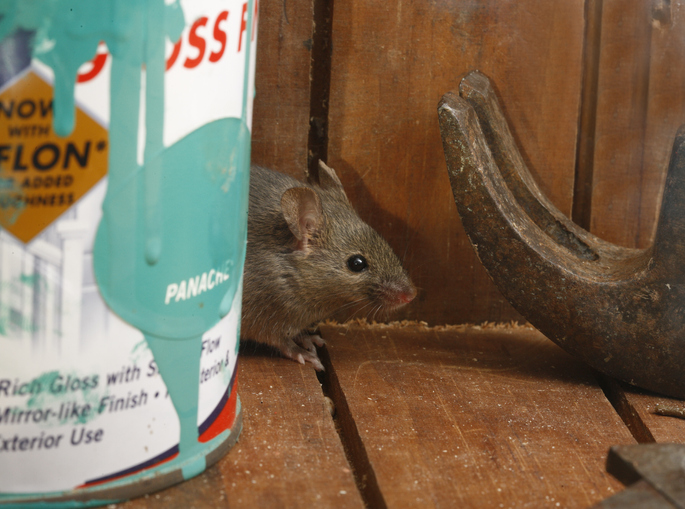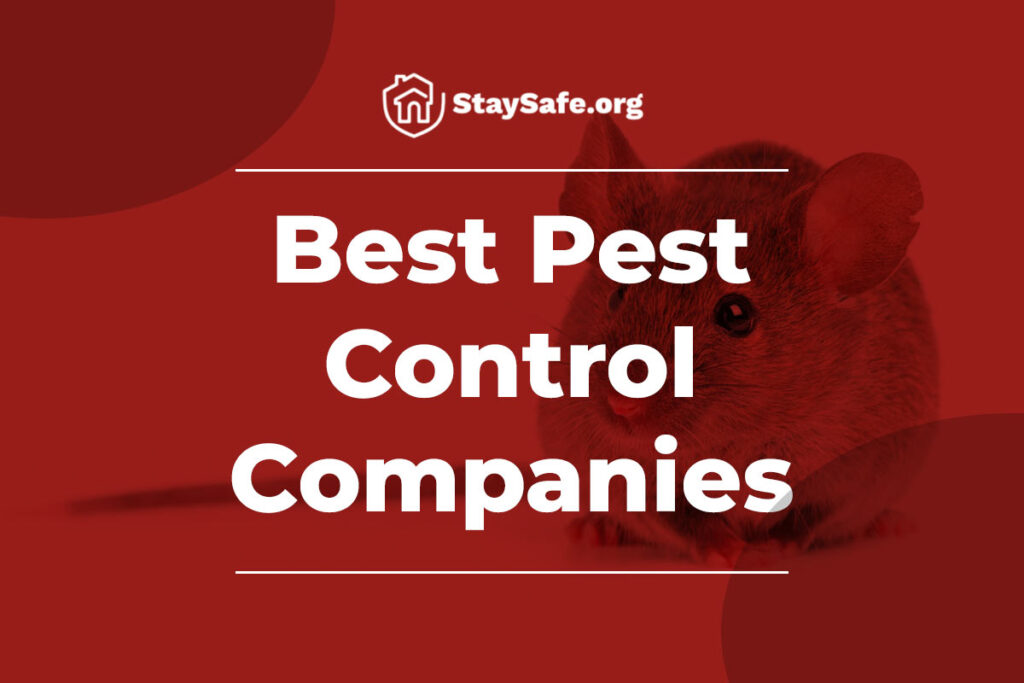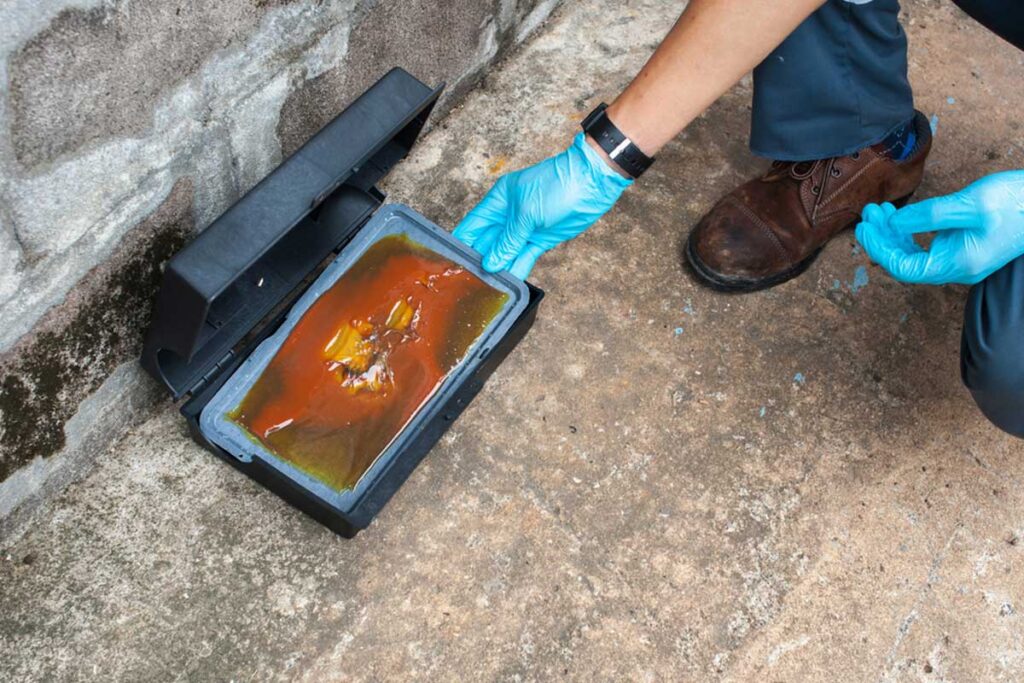When it comes to dealing with a mouse problem, many people prefer to take a natural approach to deter these pests from their homes. Natural methods not only provide an eco-friendly solution but also minimize the risks associated with the use of chemical products. By understanding mice behavior and employing preventive measures, as well as utilizing homemade remedies and natural deterrents, it is possible to effectively deter mice without the need for harsh chemicals or professional intervention. Whether you are facing an existing infestation or looking to prevent one, these natural approaches will assist you in maintaining a mouse-free home.

Table of Contents
- Signs Of A Mice Infestation In The House
- Importance Of Identifying And Addressing The Problem Early
- Natural Mouse Repellents
- Spices And Other Household Substances
- Safety And Effectiveness Of Ammonia As A Mouse Repellent
- Plants That Deter Mice
- Ultrasonic Devices And Sounds
- Homemade Solutions And Trapping Strategies
- Prevention Strategies
- Conclusion
Signs Of A Mice Infestation In The House
There are several key indicators to look for if you suspect a mouse infestation. First, check for small, pellet-shaped droppings along baseboards, in cabinets, or near food sources. Additionally, look for gnaw marks on food packaging, furniture, and structural materials, as mice constantly need to gnaw to control the length of their teeth. Shredded materials such as paper, fabric, or insulation in hidden corners or walls may suggest mouse activity.
Grease marks along walls, footprints or tail marks in dusty areas, and scratching or scurrying noises at night are also signs to be aware of. Finally, if you notice nests made of shredded materials in secluded areas or detect a strong, musky odor, it may indicate a significant mouse infestation. By recognizing these signs early on, you can take appropriate measures to address the issue promptly.
Importance Of Identifying And Addressing The Problem Early
Identifying and addressing a mouse infestation early on is of utmost importance for several compelling reasons. Mice can pose significant health risks as they carry diseases and parasites that can contaminate surfaces and food, putting human health at risk. By taking action promptly, you can minimize the potential spread of these pathogens.
Mice have a destructive nature and can cause structural damage to your property. Their constant gnawing can damage electrical wiring, insulation, and furniture, and even compromise the structural integrity of the building. By addressing the infestation early, you can mitigate the extent of the damage and prevent costly repairs. Additionally, mice gnawing on electrical wires can lead to short circuits and increase the risk of electrical fires, making early intervention crucial for maintaining safety. Finally, mice reproduce rapidly, and a small infestation can quickly escalate into a larger population, making eradication more challenging. By identifying and addressing the problem early, you can prevent the infestation from spiraling out of control and restore peace of mind in your home.
Natural Mouse Repellents
Essential Oils
Essential oils have gained recognition as natural mouse repellents due to their strong scents that mice find repulsive. Peppermint oil, in particular, is highly effective in deterring mice. The strong aroma of peppermint oil overwhelms the olfactory receptors of mice, making it difficult for them to navigate and communicate effectively. This disrupts their ability to locate food sources, establish nesting areas, and navigate their surroundings, causing them to avoid areas where the scent is present. Additionally, the intense smell of peppermint oil masks the pheromone trails left by mice, further disorienting them and discouraging their presence. Here are other essential oil options:
Spearmint Oil
Similar to peppermint oil, spearmint oil has a strong scent that mice find unpleasant. It can be used in the same way as peppermint oil by saturating cotton balls and placing them strategically in areas of mouse activity.
Eucalyptus Oil
The strong aroma of eucalyptus oil is disliked by mice, making it an effective deterrent. It can be used in the same manner as peppermint and spearmint oil.
Lavender Oil
While humans find the scent of lavender oil pleasant, mice find it repulsive. Placing cotton balls soaked in lavender oil near potential entry points or areas of mouse activity can help repel them.
Spices And Other Household Substances
To naturally deter mice using spices and other household substances, there are several effective methods you can employ. One approach is to utilize cayenne pepper, which contains capsaicin, a compound that irritates mice. The pungent scent and spicy nature of cayenne pepper are highly unpleasant to mice, making it an effective deterrent. Sprinkling cayenne pepper powder near entry points or areas of mouse activity creates a barrier that mice are reluctant to cross. The strong scent lingers in the air, serving as a constant reminder to the mice that the area is inhospitable.
Cloves or clove oil can also be used as their strong scent repels mice. Cloves have a distinct aroma that mice find unpleasant, making them an effective deterrent. Placing whole cloves or cotton balls soaked in clove oil near potential entry points or areas of mouse activity can help discourage their presence. The strong scent acts as a deterrent, making the environment less appealing to mice.
Vinegar
Another natural deterrent is the use of vinegar and water in a spray bottle. The strong odor of vinegar is unpleasant to mice and can disrupt their sense of smell, making it difficult for them to navigate. Mixing equal parts vinegar and water in a spray bottle and applying it to areas where mice are likely to be present, such as entry points or potential nesting sites, can help discourage their presence. It is important to note that the effectiveness of vinegar as a mouse deterrent may vary, and it may need to be reapplied periodically for optimal results.
Baking Soda
Baking soda can also be used as a natural mouse deterrent. By combining baking soda with a sweet substance like sugar, you can create a bait that attracts mice. However, the reaction between baking soda and the mice’s digestive system can cause discomfort or even harm to the mice. Therefore, caution should be exercised when using this method, and it is important to keep the bait out of reach of children and pets.
Safety And Effectiveness Of Ammonia As A Mouse Repellent
When it comes to natural mouse repellents, one substance that is often discussed is ammonia. Ammonia has a strong odor that is highly unpleasant to mice, making it a potential deterrent. To use ammonia as a mouse repellent, you can soak cotton balls or rags in ammonia and place them near areas of mouse activity or potential entry points. The pungent scent of ammonia can help discourage mice from venturing into those areas.
It is important to consider the safety and effectiveness of using ammonia as a mouse repellent. While ammonia can be effective in repelling mice, it should be used with caution. Ammonia is a strong chemical and can be harmful if ingested or inhaled in high concentrations. It is important to keep ammonia out of reach of children and pets to prevent accidental exposure. Additionally, ammonia may need to be reapplied frequently to maintain its effectiveness, as the scent can dissipate over time. It is worth noting that while ammonia may provide some deterrence, it may not be as effective as other natural repellents such as peppermint oil or cloves. Considering the safety concerns and potential limitations, it is advisable to explore other natural mouse-repellent options and, in case of severe infestations, consult with a professional pest control service for more comprehensive solutions.
Plants That Deter Mice
One natural approach to deterring mice from your home is to utilize plants that naturally repel them. Certain plants contain fragrances or properties that mice find unappealing, making them effective natural deterrents. Plants such as peppermint, spearmint, and lavender are known for their strong scents that mice dislike. Planting these aromatic herbs around the perimeter of your home or placing potted versions indoors can help deter mice. Another plant option is the use of deterrents like marigolds, which emit a strong odor that mice find unpleasant. These plants can be planted in gardens or flower beds near entrances or areas prone to mouse activity. Rosemary is another herb known for its strong scent that can repel mice. Growing rosemary plants near windows, doors, or other potential entry points can help discourage mice from entering.
By incorporating these mouse-repellent plants into your landscaping or indoor gardening, you create an environment that mice find unattractive and are less likely to inhabit. However, it’s important to note that while these plants may provide some deterrence, they may not be a foolproof solution, especially in cases of severe infestations. Using a combination of natural deterrents and preventive measures can help enhance the effectiveness of your mouse control efforts.
Ultrasonic Devices And Sounds
Ultrasonic devices and sounds are other natural methods that can be used to deter mice. Ultrasonic pest repellers emit high-frequency sound waves that are inaudible to humans but disruptive to mice and other pests. These devices work by creating an unpleasant environment for mice, causing them to seek alternative locations.
To use ultrasonic devices, simply plug them into an electrical outlet in the area where mice are present or near potential entry points. The sound waves emitted by these devices can cover a certain range, typically up to a few meters. It is important to note that the effectiveness of ultrasonic devices may vary depending on factors such as the size of the area, the layout of the space, and the behavior of the mice. Some mice may become accustomed to the sound over time, reducing the effectiveness of the repellent. It may be necessary to use multiple devices or strategically position them for optimal coverage. It’s also worth noting that ultrasonic devices do not harm or kill mice but rather aim to deter them from the area. When used in conjunction with other preventive measures, such as sealing entry points and maintaining cleanliness, ultrasonic devices can be a useful tool in your natural mouse deterrent arsenal.
Homemade Solutions And Trapping Strategies
When faced with a mouse infestation, homemade solutions, and trapping strategies can offer effective and affordable means of deterring mice from your home. These methods rely on natural ingredients and simple techniques to discourage mice and prevent their entry. By using homemade mouse repellents crafted from essential oils, spices, and household items, you can create an environment that mice find unattractive and inhospitable.
Employing homemade traps allows you to safely capture and remove mice from your premises. These homemade solutions and trapping strategies provide practical and accessible alternatives for addressing mouse infestations while minimizing reliance on harsh chemicals or professional assistance.
Using Food For Trapping
Using food as bait in traps is a common and effective method for trapping mice. Remember to handle traps with care and follow safety guidelines to prevent accidental injury. Regularly inspect and clean the traps to maintain their effectiveness. Here is a detailed explanation of how to utilize food for trapping mice:
Choose The Right Bait
Mice are attracted to a variety of foods, but some popular options include peanut butter, chocolate, cheese, or small bits of dried fruit. Experiment with different baits to see which ones prove most enticing in your particular situation.
Use Small Quantities
Avoid using large chunks of bait as mice can easily snatch them without triggering the trap. Instead, opt for small amounts of bait, like a pea-sized portion of peanut butter or a small crumb of cheese. This encourages the mice to fully enter the trap and trigger its mechanism.
Proper Placement
Place the bait strategically near or on the trap mechanism. If you’re using a snap trap, position the bait on the pressure-sensitive trigger mechanism. For glue traps or live traps, place the bait towards the back of the trap, luring the mice to venture deeper inside.
Secure The Bait
Depending on the type of trap, you may need to secure the bait to prevent mice from easily stealing it without triggering the trap. For example, you can smear peanut butter onto the trigger of a snap trap or use a small amount of adhesive to keep the bait in place on a glue trap.
Multiple Traps
It’s often recommended to set up multiple traps in different locations to increase your chances of success. Place the traps along walls, in areas of mouse activity, or near entry points where mice are likely to travel.
Check And Reset
Regularly check the traps to see if any mice have been caught. If a trap has successfully captured a mouse, carefully dispose of the rodent according to local regulations. Reset the trap by cleaning it thoroughly and applying fresh bait for continued trapping.
Adapt And Experiment
Mice may develop preferences for certain baits, so it’s essential to adapt and experiment with different options. If one type of bait doesn’t yield results, try a different kind to increase the chances of attracting mice to the traps.
Step-By-Step Guide On Creating And Using Homemade Mouse Traps
Creating and using homemade mouse traps can be an effective method for capturing and removing mice from your home. Remember to exercise caution when handling live mice or using homemade traps to avoid injury or accidental release. It is essential to treat captured mice humanely and release them in a safe and suitable location. Additionally, it’s important to regularly inspect and maintain the traps to ensure their effectiveness in capturing mice.
Gather Materials
Start by gathering the necessary materials to construct your homemade mouse trap. You will need a sturdy container like a plastic bucket or a glass jar with a wide opening. Additionally, you’ll need a thin wooden dowel or a stick, a piece of string or twine, and bait to attract the mice.
Prepare The Trap
Take the chosen container and position it in an area where mouse activity is observed or near potential entry points. Ensure the container is stable and won’t easily tip over. If using a bucket, you may want to place it against a wall or use a wooden board as a ramp for easier access.
Set Up The Ramp
If using a bucket, place a ramp on one side leading up to the rim. The ramp can be made from a wooden dowel or a stick. Make sure it is securely attached or positioned in a way that it won’t shift or collapse when a mouse climbs onto it.
Create The Mouse Trap Mechanism
Attach the string or twine to the dowel or stick, creating a lever mechanism. Position the dowel or stick across the top of the container, with the string hanging down inside the container.
Bait The Trap
Choose an enticing bait to attract the mice. Peanut butter, cheese, or small bits of food can be effective options. Apply the bait to the end of the dowel or stick inside the container, near the opening.
Set The Trap
Carefully position the dowel or stick so that it is balanced on the edge of the container, with the baited end hanging inside. When a mouse climbs onto the ramp and reaches for the bait, the dowel or stick will tilt, causing the mouse to fall into the container.
Check The Trap Regularly
Check the trap frequently to see if it has successfully captured any mice. When a mouse is trapped, carefully remove the container and release the mouse far away from your home to prevent it from returning.
Reset The Trap
After releasing the captured mouse, reset the trap by cleaning and rebaiting it. This allows you to continue capturing any remaining mice.
Prevention Strategies
One of the key steps in preventing a mouse infestation is to take measures to keep them out of your home. Here are some detailed tips on how to prevent mice from entering the house naturally:
Seal Entry Points
Carefully inspect your home for any gaps, cracks, or holes in walls, floors, and foundations. Mice can squeeze through very small openings, so it’s crucial to seal these entry points. Use caulk or other appropriate materials to fill in gaps, paying special attention to areas where pipes, vents, and cables enter the house. Even the tiniest openings should be addressed, as mice can exploit them.
Secure Doors And Windows
Install door sweeps on exterior doors to prevent mice from slipping through small gaps at the bottom. Check the condition of your window screens and repair or replace any that are damaged or have tears. Additionally, consider using weatherstripping to seal gaps around windows, ensuring a tight seal that mice cannot penetrate.
Cover Openings
Chimneys, vents, and other openings in your home should be covered with mesh screens. This prevents mice from entering while still allowing proper airflow. Ensure that the screens are in good condition and have small enough openings to deter mice.
Store Food Properly
Mice are attracted to accessible food sources, so it’s crucial to store food properly. Keep all food, including pet food and birdseed, in airtight containers. This prevents mice from smelling the food and being enticed to enter your home. Regularly clean up spills and crumbs, and avoid leaving food out overnight.
Maintain A Clean Yard
A well-maintained yard can help prevent mice from approaching your home. Remove any clutter or debris that could provide hiding spots for mice. Trim vegetation away from the house, especially shrubs and tree branches that may be in close proximity to windows or the roof. Keep firewood stacked away from the exterior walls to eliminate potential nesting sites for mice.
Regular House Cleaning
Regular house cleaning is an essential part of naturally preventing a mice infestation. Cleaning helps remove food crumbs, spills, and potential nesting materials that can attract mice. The frequency of cleaning depends on various factors such as the size of your household, the presence of pets, and overall cleanliness habits. However, a general guideline is to clean your house on a weekly basis to maintain a clean and mouse-unfriendly environment.
Pay special attention to areas where food is prepared and consumed, such as the kitchen and dining areas. Sweep or vacuum the floors regularly to remove any food particles or debris. Wipe down countertops, tables, and other surfaces to eliminate any food residue that may attract mice. Additionally, it’s important to clean up any spills or messes immediately and dispose of garbage regularly in sealed containers. By maintaining a clean living space and eliminating potential food sources, you create a less appealing environment for mice and reduce the risk of an infestation.
Utilizing Natural Predators
Utilizing natural predators is an effective way to deter mice naturally and keep their population in check. One of the most common natural predators of mice is the domestic cat. Cats have a strong hunting instinct and can be excellent mouse deterrents. By keeping a cat as a pet or encouraging the presence of outdoor cats in your neighborhood, you create an environment where mice are less likely to thrive. The mere scent or presence of a cat can act as a deterrent to mice.
Other natural predators such as certain breeds of dogs, snakes, and birds of prey can also help in controlling the mouse population. However, it’s important to consider the practicality and compatibility of having these predators in your specific situation. If you choose to utilize natural predators, ensure that they are well cared for and properly supervised to avoid any harm to them or to other pets. Keep in mind that while natural predators can help deter mice, they may not completely eliminate the problem, especially in larger infestations. Therefore, it’s recommended to combine predator control with other preventive measures for more effective and long-term results.
How To Get Rid Of Mice In The Garage
To effectively get rid of mice in a garage, it’s important to implement a combination of preventive measures and active elimination strategies. Start by thoroughly inspecting the garage to identify any entry points, such as gaps or openings, and seal them with appropriate materials like caulk or steel wool. Remove all potential food sources by storing items in sealed containers, including pet food and birdseed. Set up mouse traps in strategic locations, baited with enticing food like peanut butter, to capture and eliminate the mice.
Consider using natural repellents such as peppermint oil-soaked cotton balls to deter mice from entering the garage. Additionally, maintaining cleanliness by regularly sweeping the floors, removing clutter, and storing items properly will eliminate potential hiding places for mice. If there is an existing mouse infestation, take immediate action to remove them either through traps or by contacting professional pest control services. By implementing these measures consistently, you can effectively get rid of mice and create an inhospitable environment for them in your garage.
Conclusion
In conclusion, there are numerous natural methods and strategies available to deter mice effectively. By understanding their behavior and implementing preventive measures, such as sealing entry points, keeping a clean environment, and utilizing natural deterrents, you can create an inhospitable atmosphere for mice. Additionally, employing homemade solutions, trapping techniques, and utilizing natural predators can contribute to a comprehensive approach to deterring mice naturally. It is important to be persistent and consistent in implementing these methods to achieve long-term success in preventing mice infestations. Remember to tailor your approach to the specific needs of your home and environment. By adopting these natural deterrents and practices, you can create a mouse-free space and ensure the well-being and cleanliness of your home.




